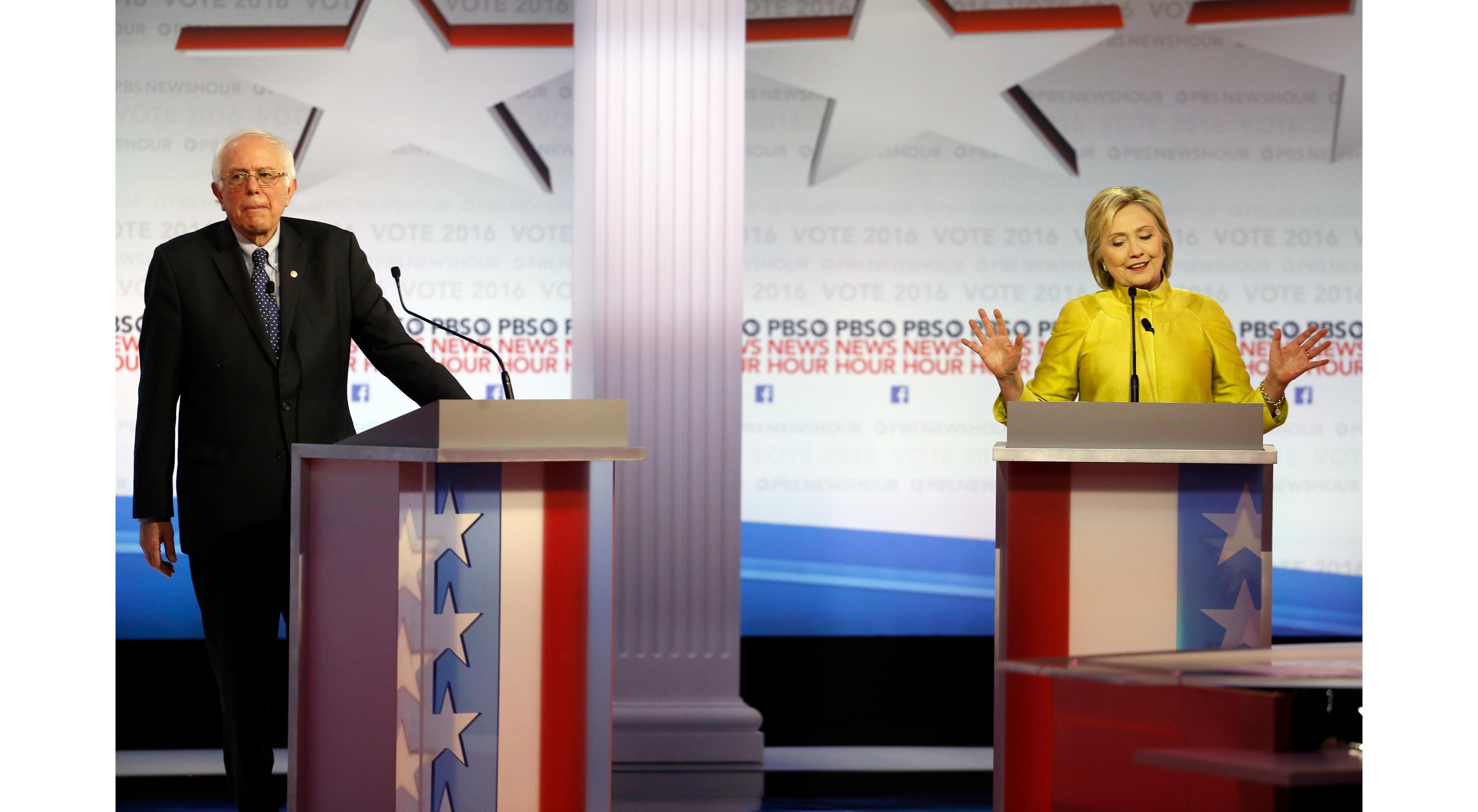

Presidential candidates Hillary Clinton and Bernie Sanders are taking their battle for the Democratic nomination to Colorado’s airwaves this month in advance of the Super Tuesday caucus March 1.
And the messages are positive -- unlike a lot of political advertising these days.
Colorado Republicans, meanwhile, are getting virtually no attention from their candidates because the state party is not conducting a presidential straw poll Tuesday and won’t select national convention delegates until April.
That means the bulk of ad dollars streaming into the state -- and TV and radio station coffers -- is on the Democratic side. Most of it is coming from the candidates' official campaigns, but outside groups are spending money in the state, too.
As the chart below shows, the Sanders campaign is far outpacing Clinton's in advertising on local TV stations, cable and satellite TV in the state. He leads in spending with $1,605,799 million to Clinton’s $748,197 as of Tuesday night.

That means Coloradans will see at least 11,820 ads running through Tuesday’s caucuses. Clinton is running ads in Denver and, to a lesser extent, in Colorado Springs. Sanders’ ads are running in Denver, Colorado Springs and Grand Junction, as this chart below shows.

Both candidates are running 60-second ads, a relative rarity in the political advertising market.
Sanders’ longer ad, which debuted in Iowa, features Simon and Garfunkel’s “America” playing over scenes of Sanders interacting with voters at rallies and elsewhere. The only spoken words are at the end of the ad when the candidate says he approves the message.
Clinton came out with her own longform ad this week in which she emotionally consoles a 10-year-old girl who fears her parents might be deported. The ad is clearly aimed at wooing Latino voters sensitive to the immigration issue.
Such feel-good spots are a far cry from other states, where Republican candidates and their Super PACS are battling it out with lots of negative ads.
Colorado Not Alone
In Nevada, where Clinton won Saturday’s Democratic caucuses, ad spending is estimated at more than $5 million. The Wesleyan Media Project, which tracks and analyzes political advertising, estimates Sanders had a slight edge there, spending $2.6 million on TV to Clinton’s $2.5 million.
In the Minneapolis market, the candidates are about the same or a bit less than in Colorado. Sanders is at about $730,000, while Clinton is close to $600,000 as of early this week. Minnesota is also holding caucuses on Super Tuesday.
Nationally, Clinton and Sanders are virtually tied for the lead in all political ad spending, according to Wesleyan, each spending more than $20 million and airing more than 38,000 spots.
But ad spending is way up for everyone nationally compared with 2008 and 2012, according to the Wesleyan researchers.
Political Action Committees Chip In
TV ads are often the biggest expenditure a campaign will make. But they aren’t the only way to get the political message out. Numerous pressure groups are making phone calls, canvassing and running digital ads for or against presidential candidates.
The most significant spending so far, based on filings with the Federal Election Commission, is by the Service Employees International Union. That union endorsed Hillary Clinton, but they’re spending more than $200,000 canvassing in Colorado to oppose Republican candidates Donald Trump, Marco Rubio and Ted Cruz.
And on Wednesday, SEIU announced it would beginning airing Spanish language TV and radio ads supporting Clinton in the Denver market starting Thursday and running through Tuesday’s caucus. The ads will air on Telemundo, Univision and three radio stations. Their expenditures on those ads won't be available on the FCC public files or the FEC electronic filings until sometime on Thursday.

| Spender | Amount | Candidate position | Activity |
| SEIU COPE (Service Employees International Union Committee On Political Education) | 203378 | oppose Trump, Cruz, Rubio | canvassing |
| Priorities USA Action | 42164 | oppose GOP candidates | digital ads |
| League of Conservation Voters, Inc. | 30146.19 | support Clinton | digital ads, polling |
| National Nurses United for Patient Protection | 27493.27 | support Sanders | mailer |
| TEA PARTY MAJORITY FUND | 17989.66 | oppose Clinton | voter calls |
| KEEP THE PROMISE I | 13102.08 | support Cruz | media |
| FREEDOM'S DEFENSE FUND | 12196.98 | oppose Clinton | voter calls |
| Right to Rise USA | 10244.91 | support Bush, oppose Rubio, Cruz | media |
| Security Is Strength PAC | 2315.47 | support Graham | 2015 TV ad |
| CONSERVATIVE MAJORITY FUND | 1635.42 | oppose Clinton | voter contact |
| TEA PARTY VICTORY FUND | 327.08 | oppose Clinton | voter calls |
| VIGOP (VIRGIN ISLANDS REPUBLICAN PARTY) | 77.08 | oppose Clinton | mailer |
About $360,000 has been spent by independent groups on supporting or opposing presidential candidates in Colorado.
The second biggest spender is Priorities Action USA, the super PAC that supported President Obama and is now supporting Clinton. That group spent its money last year on digital ads opposing a variety of Republican candidates, mostly around the time of the October debate in Boulder.
Meanwhile, the League of Conservation Voters spent more than $30,000 on polling and digital ads supporting Clinton, while the National Nurses United for Patient Protection spent more than $27,000 on mailers supporting Sanders.
Digital producer Megan Arellano contributed to this report.









